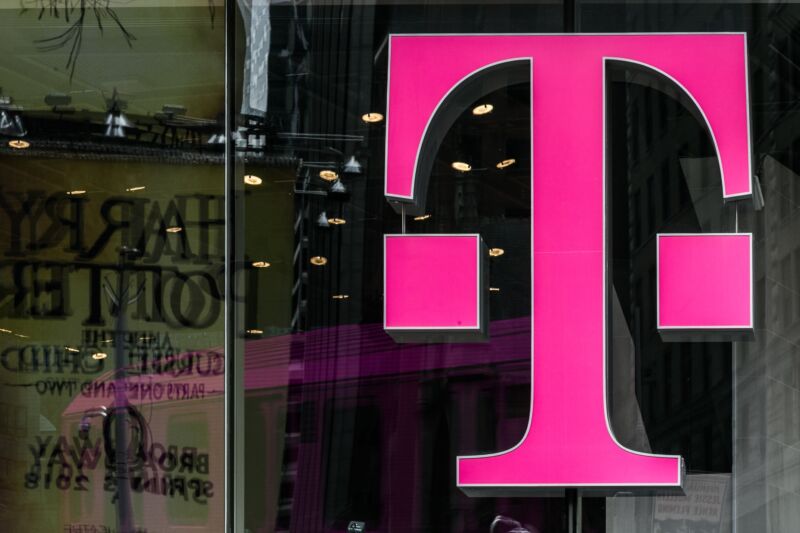
Getty Images | Bloomberg
T-Mobile has cut at least 5,000 jobs since completing its acquisition of Sprint despite promising that the merged company would start creating new jobs “from day one.”
As noted by Light Reading today, a T-Mobile filing with the Securities and Exchange Commission last week said, “As of December 31, 2020, we employed approximately 75,000 full-time and part-time employees, including network, retail, administrative, and customer support functions.” That’s 5,000 fewer than the number T-Mobile gave on previous occasions, including a press release on December 8, 2020 that said there are “more than 80,000 employees at the post-merger T-Mobile.” The 80,000 figure was probably off by at least a few thousand employees by the time it was repeated in that press release, given that T-Mobile had 5,000 fewer employees just a few weeks later.
The US government didn’t impose any hiring requirements in the merger conditions that allowed T-Mobile to complete its acquisition of Sprint in April 2020. But T-Mobile and then-CEO John Legere made jobs a key part of their lobbying for the merger. In April 2019, Legere published a blog post titled “Just the Facts on Jobs: The New T‑Mobile Will Create Jobs From Day One.”
“New T-Mobile will have more than 11,000 additional employees on our payroll by 2024 compared to what the combined standalone companies would have,” Legere wrote. Legere also claimed that T-Mobile would “open 600 new stores to serve rural areas and small towns, that neither T-Mobile nor Sprint serve today, directly resulting in approximately 5,000 new retail jobs.” That was consistent with T-Mobile owner Deutsche Telekom’s claim in April 2018 that its “overall plan is for the larger company to employ more staff than the two previous companies put together.”
Union predicted job cuts before merger
The Communications Workers of America (CWA) union wasn’t fooled by T-Mobile’s premerger promises. “We knew that T-Mobile couldn’t be trusted to keep its promises. That’s why we pushed for enforceable commitments from T-Mobile on jobs during the merger process,” a CWA spokesperson told Ars today. “Regulators need to take a close look at what’s happening at T-Mobile and get serious about protecting jobs as part of their oversight of corporate mergers.”
The CWA predicted before the merger was complete that it could lead to 25,500 job losses at retail stores and 4,500 job losses at T-Mobile headquarters. Retail stores are often run by independent third parties with their own employees, so those job losses wouldn’t necessarily be reflected in T-Mobile’s head count.
The US did force T-Mobile to sell former Sprint subsidiary Boost Mobile and other prepaid businesses, which may have reduced T-Mobile’s head count a bit. This does not explain the reduction from 80,000 to 75,000 jobs at T-Mobile because of the aforementioned retail-store issue and the fact that T-Mobile continued to cite the 80,000-employee number for over five months after it sold Boost to Dish.
We asked T-Mobile today for details on what types of jobs were cut and will update this article if we get an answer.
Before the merger, T-Mobile had about 53,000 part- and full-time employees at the end of 2019. Sprint had nearly 29,000 employees at the beginning of 2019, but it’s not clear how many it had right before the merger was completed over a year later. T-Mobile also laid off some employees about a month before completing the Sprint acquisition.
California regulators imposed a merger condition requiring T-Mobile to add 1,000 employees across the state. T-Mobile asked the California Public Utilities Commission (CPUC) to eliminate the jobs requirement, but the CPUC denied the request.
Update at 5:45pm ET: T-Mobile did not answer our specific questions about what types of jobs were cut but provided a statement after this article published, saying, “We’re not backing away from our commitment on jobs. In 2020 we worked through the integration and as with any merger we addressed some redundancies, however we have continued hiring in spite of a complex pandemic environment. We currently have nearly 3,000 job openings, only a portion of which are part of our Un-Carrier Job initiative that we launched last summer to hire 5,000 more employees.”









